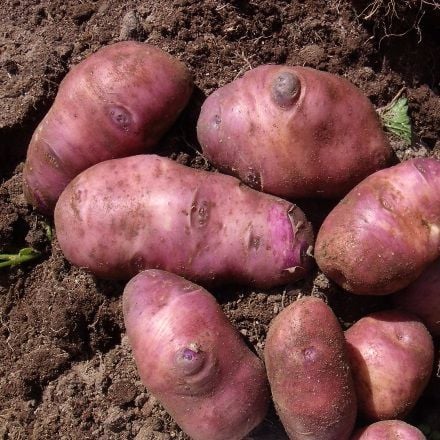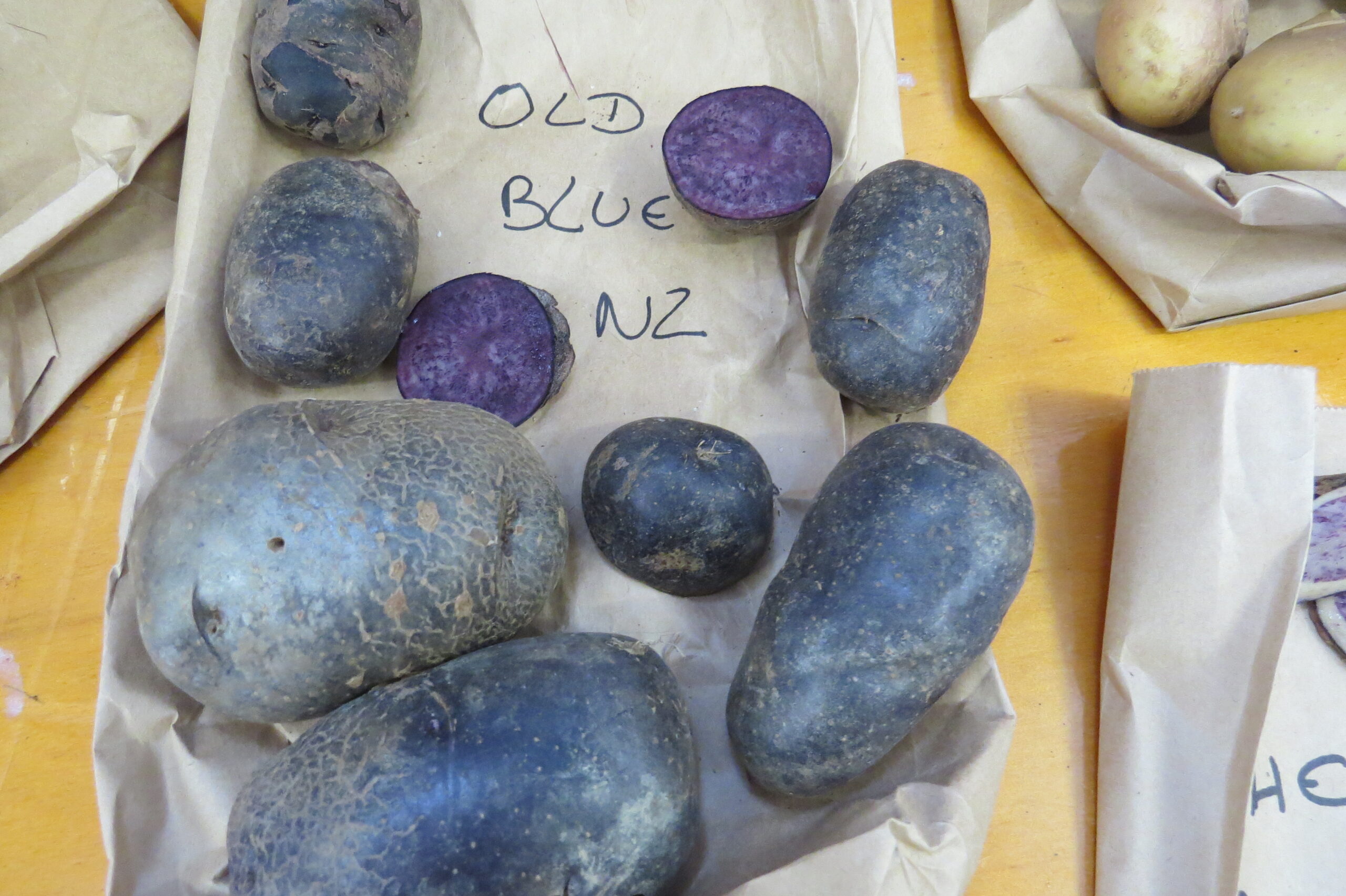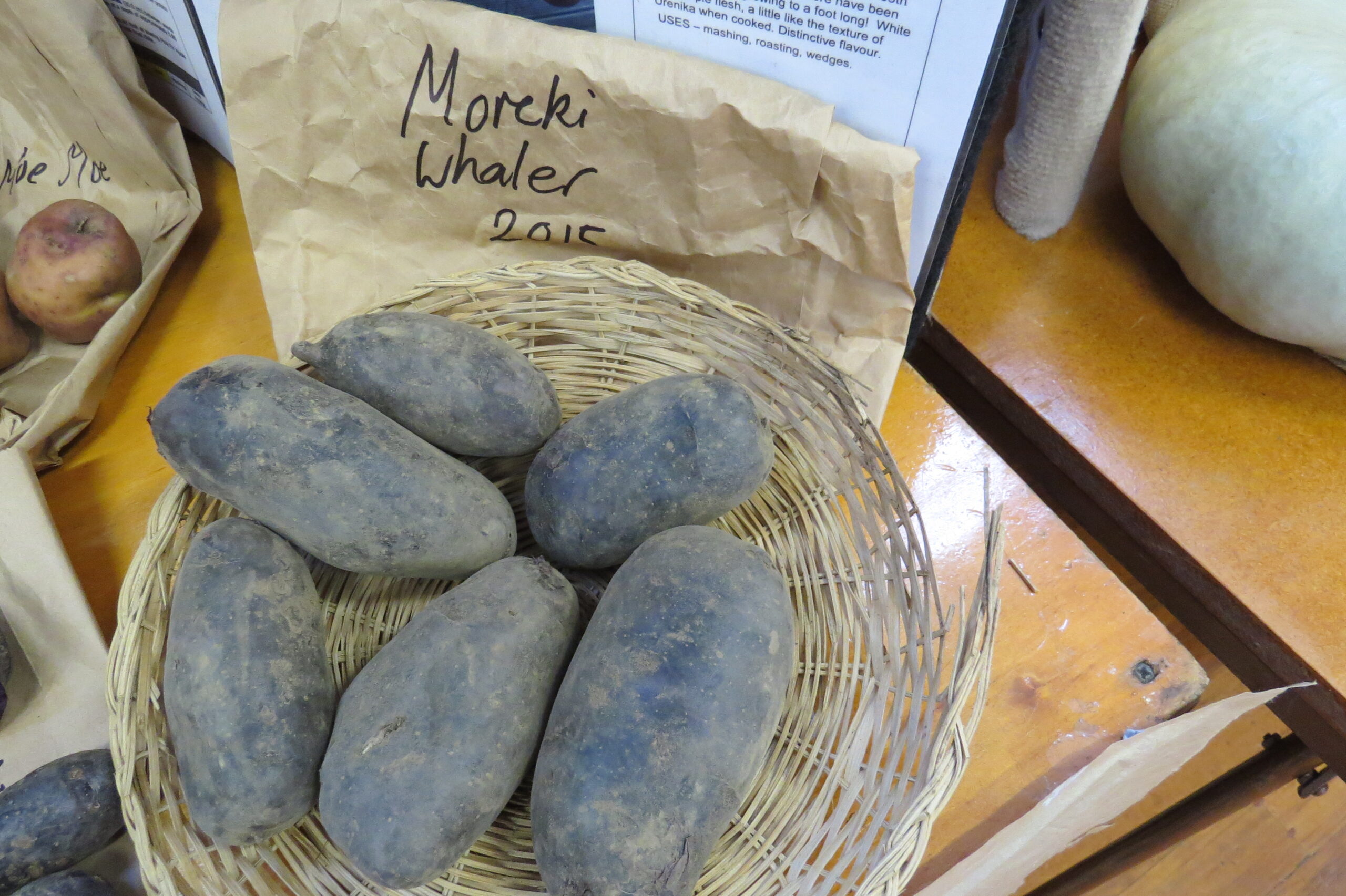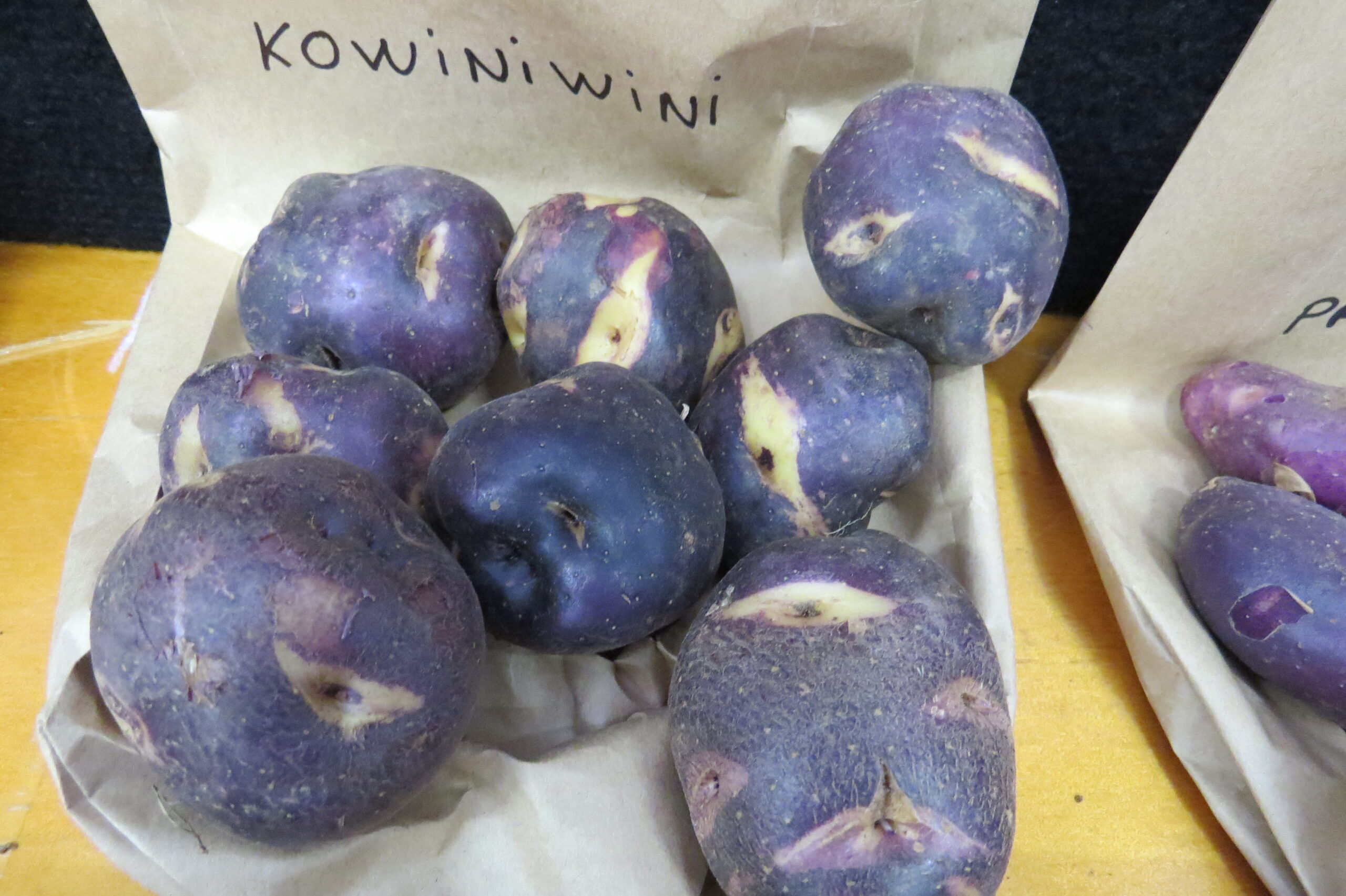Carrots
In 2017 we grew 25 carrot varieties that ranged in colour from white to black varieties. Our objective was to try and find the best ones for human health. We had each variety analysed for carotenoid and polyphenolic compounds.
There is significant colour diversity within heritage carrot varieties. The colours you see are exhibited from the compounds within the carrot and the colours are therefore an indicator of the compounds within the vegetable and their potential health benefits.
It is important to understand the history and original form (as much as possible) for a food, because from our understanding, that original form is likely to have the right components in appropriate relationships and structures to provide the greatest medicinal benefit. Modern commercial breeding with its human control over the plants natural reproductive process interferes with the delicate balance of synergies that need to be established between the compounds. As colours are altered by man, some key compounds can in turn be altered or completely disappear.
The modern orange carrot is largely a product of breeding begun by Dutch growers in the 16th century. With the rise of William of Orange and the House of Orange being represented on the Dutch flag at the time, orange carrots were adopted with patriotic fervour. So much so that they are now considered the ‘normal’ carrot, rather than another of man’s creations.
According to Philipp Simon at the USDA “There were a few orange carrots before 1600, most certainly in Spain, but most were purple and yellow in that pre-1600 era. From what we know, red and white carrots had not yet been developed at that time.
Yellow carrots, now and quite certainly then, contain predominantly one pigment – lutein.
Purple carrots always contain anthocyanins, which in the case of carrots are almost exclusively a collection of 5-6 cyanidin derivatives. These 5-6 compounds specific to carrot are well-characterized. The pre-1600 purple carrots noted in historical documents were actually quite certainly purple on their outer storage root surface, sometimes with purple colour penetrating well into the cortex (phloem), but likely never with purple colour occurring in the core (xylem).

Although these carrots appear purple, their underlying colour is yellow. The compounds in the skin that create the purple colour have bled into the flesh of the carrot, so the pre-1600 carrots referred to as “purple” were actually purple with yellow inner phloem and xylem, so they actually contained both the 5-6 anthocyanin pigments plus lutein. The purple tissue in these purple-yellow carrots also contains as much lutein as does the non-purple, yellow tissue of a given carrot root. You just can’t see it since it’s masked by the anthocyanins.
Black carrots, for which I am not aware of any pre-1600 mention, are simply dark purple carrots and contain the same compounds as paler purple carrots”.[1]
A reliable form of this original carrot that we have found is the Gniff Carrot (pronounced Niff). There is an excellent YouTube video on this carrot here: https://www.youtube.com/watch?v=jc-Fmbk3cZs
As has happened with tomatoes, the majority of research into the health benefits of carrot has concentrated on looking at the predominant compound (in this case beta-carotene) in modern orange carrots. Whereas the combination of anthocyanins together with lutein in the Gniff ancient carrot is likely to have significant benefits for human health and has yet to be investigated by modern science. Our research found that the Gniff carrot had very high levels of chlorogenic acid as well as lutein and an anthocyanin. Other varieties that we found of interest were a Turkish carrot named ‘Black Anotolean’, which is actually a purple variety, and a carrot called Synsdu Violette (Syrian Violet).
We would encourage further research into carrots. In particular it would be interesting to test different accessions of the Gniff carrot.
2017 Report on Carrot and Potato Research – Tomato and other Plant-Food Metabolites for Health
2017 Carrot data and graphs on Excel – Heritage Food Crops Research Trust 2017 Carrot data
[1] Communication from Philip Simon, Research Leader, USDA, Agriculture Research Service, January 2016
2025 Update:
We believe that integrating purple carrots that have a visible yellow core into your diet, containing as they do high levels of anthocyanins as well as lutein, could potentially offer neuroprotective benefits. We hypothesise that this specific combination of compounds could stimulate the firing of neuron receptors in the human brain.
We know that anthocyanins, found in colourful fruits and vegetables, have been shown to cross the blood-brain barrier and exhibit antioxidant, anti-inflammatory, and anti-apoptotic properties. These effects contribute to their neuroprotective role, potentially alleviating symptoms of neurodegenerative diseases [1].
While lutein, a carotenoid found in leafy greens and other vegetables, is known for its role in eye health and has also been linked to cognitive benefits. It accumulates in the brain and is associated with improved cognitive function and reduced risk of age-related cognitive decline [2].
While both compounds individually show promise for brain health, we accept that more research is needed to determine if their combination specifically stimulates neuron receptors.
[1] César A. Zaa, Álvaro J. Marcelo, Zhiqiang An, José L. Medina-Franco and Marco A. Velasco-Velázquez: Anthocyanins. Molecular Aspects on Their Neuroprotective Activity. Biomolecules 2023, 13(11), 1598;
[2] Hock Eng Khoo, See Meng Lim and Azrina Azlan. Evidence-Based Therapeutic Effects of Anthocyanins from Foods. Pakistan Journal of Nutrition, 18: 1-11.
DOI: 10.3923/pjn.2019.1.11
Potatoes
Potato is a large part of the staple diet for many people around the world. Unfortunately, in the western world we have, as with so many foods, chosen varieties that contain less of the medicinal elements that can be so beneficial for human health. In choosing white potatoes, we have overlooked the fact that colour is an indicator of the compounds within a variety, and potential medicinal value. We only have to go to Peru (the home of the potato) to see the potential that does and can exist with the potatoes that are still grown there.
In our 2017 study, we obtained a range of heirloom potatoes as well as some more modern varieties available in New Zealand and had them tested.
Potato Findings
The Moe Moe potato had an incredibly high level of an anthocyanin that has been tentatively identified as malvidin 3-coumarylrutinyl-glucoside (over twice the level indicated in the Urenika variety). Moe Moe also had very good levels of all of the anthocyanin compounds tested, which was surprising since it has a multicoloured skin and a creamy patterned flesh, rather than the dark purple skin and flesh that we would have expected for these levels.
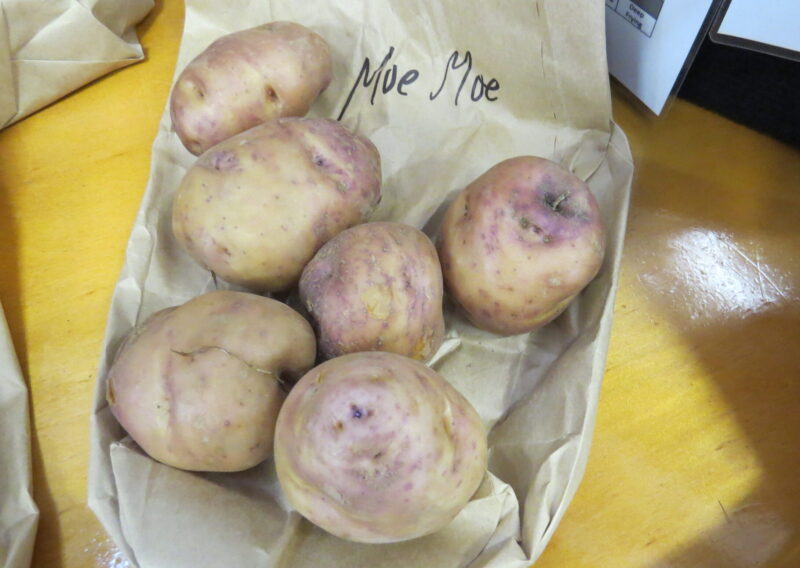
The main polyphenol compound found was chlorogenic acid and some of the purple potatoes contained the highest levels: Purple Pride; Amuri Mystery and Urenika.
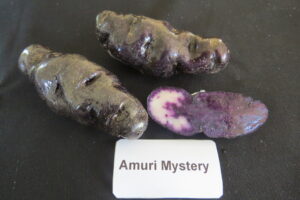
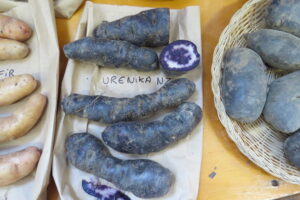
Within the smaller concentrations of compounds, the Raupi variety stood out, as particularly interesting, with very high levels of quercetin 3-rutinoside; kaempferol 3-rutinoside; and quercetin 3-galactoside (also the only potato in our study to contain this compound.
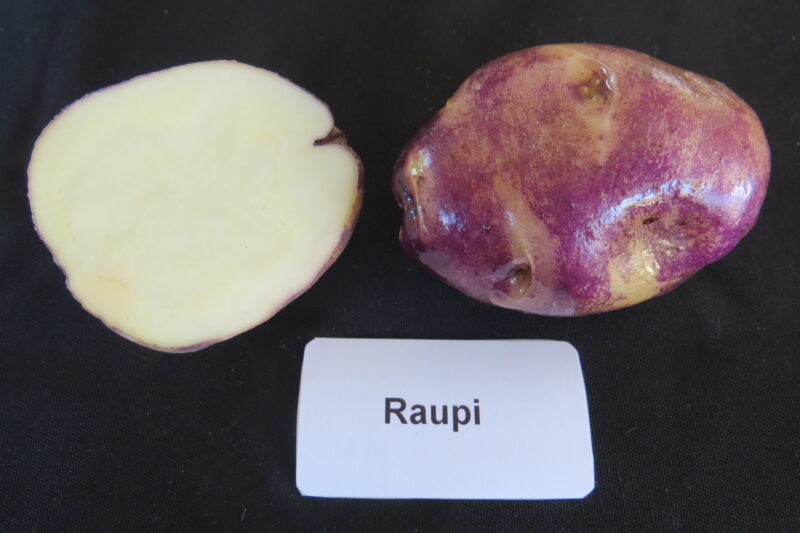
The Paraketea potato is interesting because of its high levels of polyphenol compounds. In particular chlorogenic acid and p-coumarylquinnic acid, compounds that we might normally associate with a very dark purple variety, whereas this potato is lighter in its purple colouring as shown below.

Paraketia Potato (Photo courtesy of Setha Davenport)
The Agria potato in our study tested with the highest level of alpha-solanine. “This α-solanine is highly toxic to animals and humans and has been indicated as a risk factor for developing congenital malformations. However, recent studies suggest that α-solanine possesses anti-microbial and anti-tumor activities”. https://scialert.net/fulltext/?doi=ijp.2019.301.310
To view the potato data from our study, plus graphs of each compound see the link below. If you share our interest in Heritage Potatoes, we would be interested in hearing of your insights obtained from your own research.
Click here to download the 2017 Potato Data
[1]Adriana Ordóñez- Vásquez, Víctor Aguirre- Arzola, Myriam Angélica De la Garza-Ramos, Víctor Hugo Urrutia-Baca and Fernando Suárez-Obando, 2019. Toxicity, Teratogenicity and Anti-cancer Activity of α-solanine: A Perspective on Anti-cancer Potential. International Journal of Pharmacology, 15: 301-310.












